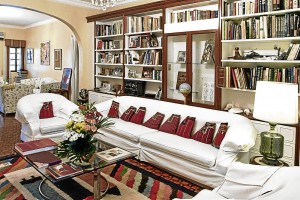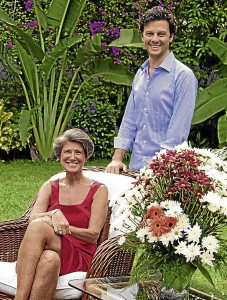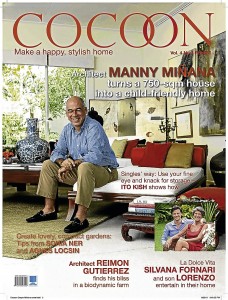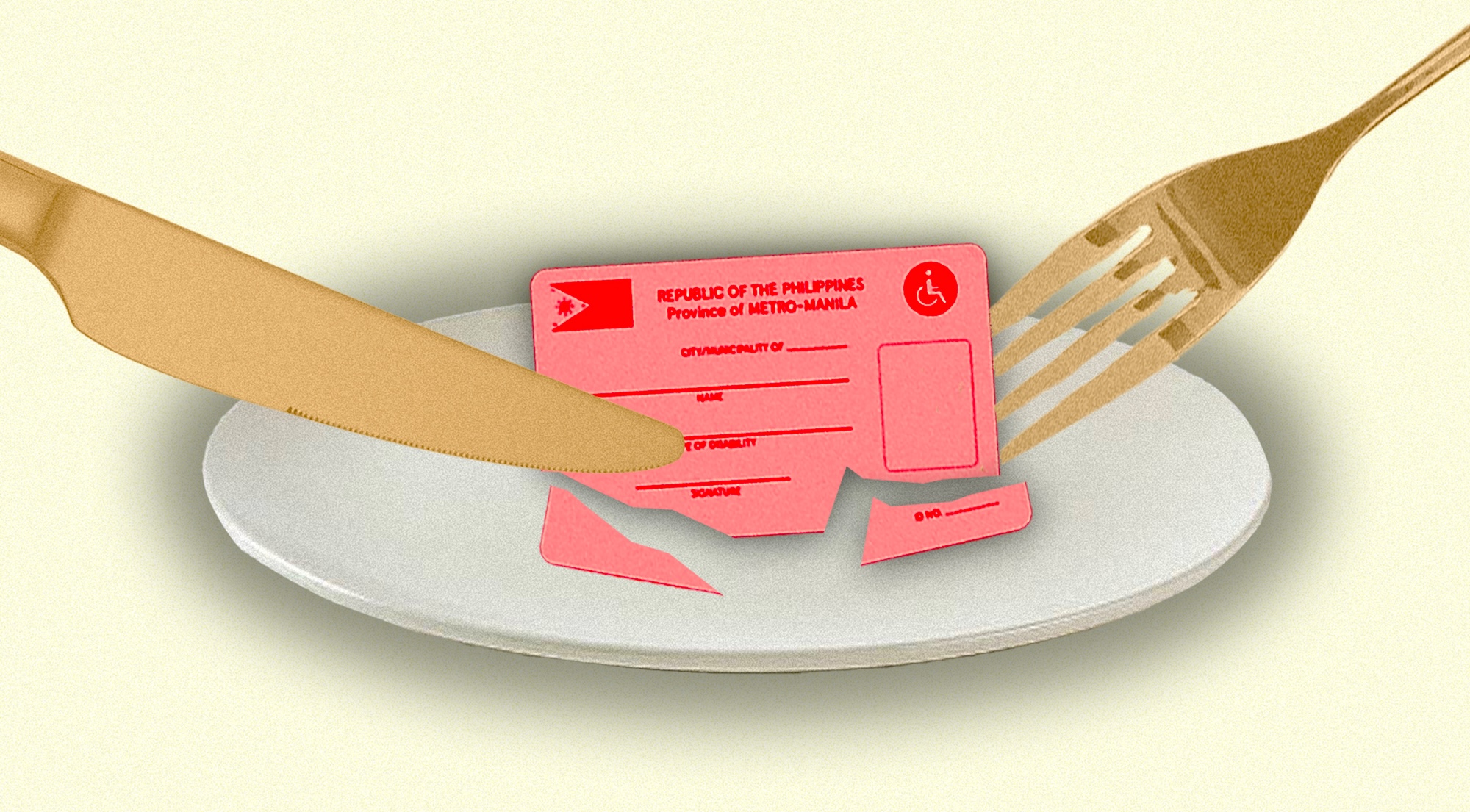
Madame Fornari looked elegant in a red sheath dress. Walking in the backyard in high heels, she proudly showed us the plots of vegetables and herbs—pechay, lemongrass, tomato and eggplant.
The lanai, the heart of their entertaining, had been decked for the Cocoon shoot. “For the Mediterranean people, the outdoors is important. The garden is so beautiful and the tropical plants are so lush!” she gushed. To deal with mosquitoes, the garden is frequently fumigated.
A typical setting for them was to roll out the carpets and set the wicker furniture and buffet tables on the lawn. In the lanai, the main dining table was embellished with malachite obelisks, acquired by Ambassador Fornari when he served as consul general in Zaire in the ’80s.
Edible centerpiece

While most women of a certain age run to their plastic surgeon, Madame Silvana has no pretensions. To her, sophistication came with maturity. “If it’s my 59th birthday, is the dinner a private or a diplomatic affair? It’s both.”
After making the guest list and sending out formal invitations, creating the atmosphere is vital to an event’s success. “In Italy, we love china and tablecloths that match,” she said. One can have four sets of china with complementary tablecloths for a different look each time.
She pointed out that lighting is often taken for granted. When it comes to mood lighting, Ambassador Fornari is hands-on. “He loves candles and spotlights,” she said. “He is good in the details—the personal touch.”
What is most anticipated is the menu, naturally. “We love good food and good wine. Filipinos prefer soft drinks or iced tea, but for us wine is very important, and it has to be paired properly with the dishes,” Madame Silvana said. The meal usually consists of three or four types of appetizers such as Italian flan, vegetables, bite-size prawns, or salad followed by a four-course dinner. “When guests come to an Italian embassy function, they expect pasta.” The most popular pastas are the alla norma and the porcini mushroom.
Since local tomatoes are too acidic, imported peeled tomatoes are used. “We don’t do fresh tomato sauce. It doesn’t come out as nice. Make do with what you find. Pecorino and Parmesan are important for Italians. You can’t live without ricotta.”
She explained further, “There must be balance. If you have a fish appetizer with pasta and eggplant, you won’t have the same vegetables with the main course. It’s important that every course is distinct from the other. If you have something very light, balance with something heavy. Desserts are served on the buffet table, so people can get up and chat.”
Pomp and glamour

“Perfection,” declared Lorenzo, son of Ambassador Fornari. In parties where people don’t know he is part of the family, he would overhear compliments. “They love the class, the style. Everybody enjoys the event and hopes to be invited again.”
Entertaining is in the Fornaris’ DNA. Madame Silvana recalled that her side of the family loved color, flowers and being with people. As the son of a diplomat, Ambassador Fornari was exposed early on to all kinds of socials. His mother Marella was a gracious hostess. “She was the best conversationalist. She could talk to the stones and melt them,” said Madame Silvana.
Even Lorenzo was a natural host. “I learned everything from my parents,” he said. “What you see here is what I try to emulate when I’m entertaining. It’s the mood, the people and a lot of little things you put together to make a whole. I’ve always known my parents to be very wholehearted in what they do, and people experience that.”

Asked what their most unforgettable event has been, Madame Silvana replied, “I always think of the future. I don’t look back on the past.”
Reprinted from Cocoon Magazine
Welcome dinner for Maestro Uto Ughi and Maestro Alessandro Specchi
Menu
Cocktails
Baked prunes wrapped in pancetta
Mini frittura all’ italiana
Melon cubes wrapped in Parma ham
Canapé mascarpone with anchovies
Pasta
Pasta alla Norma with eggplant and pecorino cheese
Fragrant porcini mushroom risotto
Main course
Crab shell with fantasy of seafood
Salad
Fresh tomato and arugula salad with extra virgin olive oil
Dessert
Baba au rhum with caramel syrup
Tiramisu
Zabaglione and coffee ice cream
Fresh strawberries dipped in bitter chocolate












































